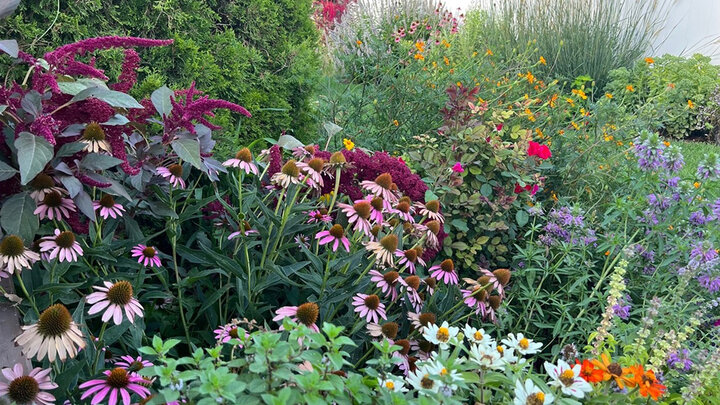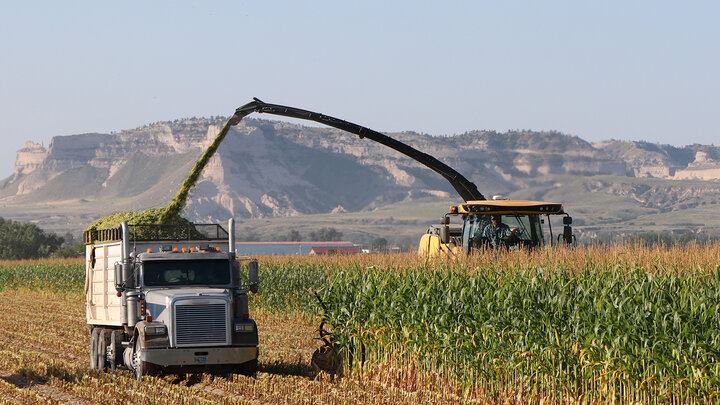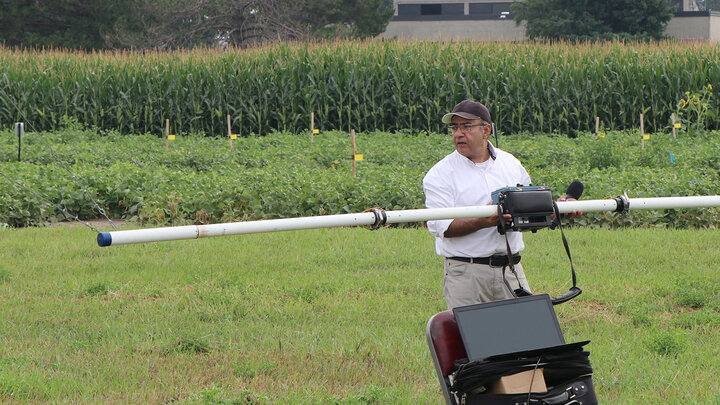After a long summer, August can be tough for gardens and gardeners alike. Heat, pests, and even hail may have taken a toll, and it can be tempting to just give up until next year. But your landscape (and you) will be happier if you don’t. Key tasks include watering, deadheading, weeding, mulching, harvesting produce, saving seeds, and starting cool-season crops.
During hot weather, it’s essential to water your garden and landscape wisely. Instead of following a schedule, check the soil first – if it’s dry an inch or two below the surface, it’s time to water. Focus on the root zone rather than the leaves and water deeply enough to moisten the soil five to six inches down. Morning is the best time to water, since it allows foliage time to dry quickly and helps the plants stay hydrated through the hottest part of the day. Mulch can be used in all garden settings, including vegetable gardens and containers. Additionally, soil can be built over time with compost and other organic matter, which improves its structure and its ability to hold water.
After watering, check for your common garden weeds, including bindweed, crabgrass, and thistle. While some, like dandelions and purslane, are edible and nutritious. Weeds compete with vegetables and ornamentals for water, sunlight, and nutrients. They can also harbor pests and diseases or reproduce so prolifically that they return year after year. Weeds thrive where there’s opportunity, especially in open soil with little competition. A few key strategies can make managing them easier and more effective:
- Mulching: Apply a layer of mulch to block sunlight and reduce weed growth.
- Strategic Watering: Direct water to the plants you want, using drip irrigation or soaker hoses, to avoid encouraging weed germination in open areas.
- Garden Bed Design: Plant densely to shade the soil and reduce open gaps. Fast-growing crops like lettuce, arugula, bush beans, or radishes can fill bare spots. The goal is to keep the soil covered so weeds have nowhere to establish.
Excessive soil disturbance can bring dormant weed seeds to the surface. By using these strategies, you can reduce competition for your desirable plants and cultivate a healthier, more productive garden.
Deadheading is an important garden task that keeps plants healthy, encourages new blooms, and keeps your garden looking tidy. Removing spent flowers redirects the plant’s energy from seed production to root and vegetative growth, supporting stronger, longer-lasting plants. To deadhead, simply pinch or cut off faded blooms just above the first set of healthy leaves. Some plants may also produce ornamental seed heads, fruit, or hips that provide winter interest and food for birds and wildlife, so consider leaving those in place.
You may want to save some seeds to carry your best plants into the next season. One key to success is knowing the difference between hybrids and open-pollinated plants. Hybrids are created by crossing two different parent plants, so their seeds won’t reliably reproduce the parents’ qualities. Open-pollinated varieties, including many heirlooms, grow true to type and are the best choice for seed saving. Harvesting seed methods depend on the plant. Wet seeds such as tomatoes, cucumbers, melons, squash, and pumpkins should be collected from fully ripe fruit, fermented in water to remove pulp, then dried. Dry seeds like peas and beans should remain on the plant until pods are brown and seeds rattle inside, then dried indoors before shelling. Many flowers and herbs can also be harvested once seed heads turn brown, though it’s worth checking species-specific guidelines.
After harvest, store seeds properly to keep them viable. They should be kept cool and dry—sealed glass containers in the refrigerator work well. Always label seeds with their name, variety, and collection date. For best results, use them within a year, since older seeds lose vigor and germinate less reliably.




